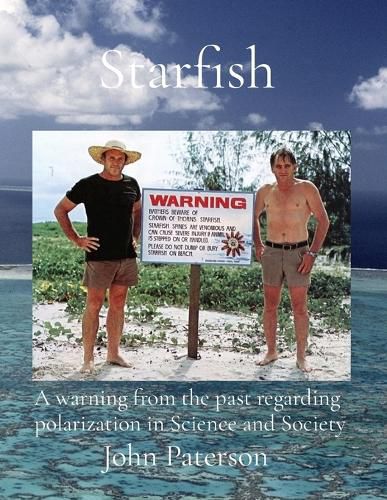Starfish
John Paterson

Starfish
John Paterson
This title is printed to order. This book may have been self-published. If so, we cannot guarantee the quality of the content. In the main most books will have gone through the editing process however some may not. We therefore suggest that you be aware of this before ordering this book. If in doubt check either the author or publisher’s details as we are unable to accept any returns unless they are faulty. Please contact us if you have any questions.
SUMMARY OF RESEARCH
Sea-urchins and starfish both belong to Phylum Echinodermata and while early research on the fertilization reaction was conducted by Rothschild and Swann (1949) on sea-urchins, the conclusions regarding egg fertilization and proximity of spawning individuals were just as applicable to starfish.
Human collection of the Giant Triton and other predators was suggested by Endean (1969) as a causative factor in starfish outbreaks, but this Predator Control Hypothesis was generally disregarded due to the enormous potential numbers of starfish. Recent research demonstrating the strong avoidance reaction of the starfish to the triton together with an understanding of the importance of starfish aggregation to reproductive success may be slowly changing this opinion.
???PREFACE
It's 1957 and Japanese scientists travel to the island of Miyake-Jima to study a strange disease affecting a coral reef. The island's people have noticed a strange increase in the number of the large, venomous crown-of-thorns starfish. Over the following years they kill large numbers of the starfish attempting to protect the living coral upon which the starfish is feeding. The Japanese scientists noted that they had observed giant triton shells feeding on the crown-of-thorns starfish, in research published only in Japanese.
5 years later
This same species of starfish is noticed in increasing numbers at Green Island, off Cairns here in Australia. Over the next five years, the starfish outbreak will consume much of the living coral at Green Island and other reefs in the vicinity.
The giant triton is again observed feeding on crown-of-thorns starfish and research in Queensland is commenced on the feeding rate and prey preference of the giant triton. Tests are done with three species of starfish; multiple specimens of each species are placed in cages with giant tritons.
The results showed that while each giant triton ate one crown-of-thorns starfish per week on average, it ate less crown-of-thorns starfish than another relatively common species of starfish. The research concluded that the crown-of-thorns starfish was not the preferred prey of the giant triton.
This conclusion was further supported by similar research done overseas, despite the observation that giant tritons were often located on the Great Barrier Reef, and elsewhere, were eating crown-of-thorns starfish.
30 years later
It becomes apparent that such a conclusion about prey preference of the giant triton is simply not justified, given the crown-of-thorns starfish often escapes complete predation because of its relatively high mobility. It is apparent that there is much confusion between prey capture and prey preference of the giant triton. It is suggested this distinction is relevant to control of prey.
??40 years later
Australia is unsuccessful in its attempt to list the giant triton in Appendix 2 of the Convention in Trade in Endangered Species (CITES) because Japan objects on the grounds of 'no evidence' for the alleged endangered status of giant triton.
This item is not currently in-stock. It can be ordered online and is expected to ship in 7-14 days
Our stock data is updated periodically, and availability may change throughout the day for in-demand items. Please call the relevant shop for the most current stock information. Prices are subject to change without notice.
Sign in or become a Readings Member to add this title to a wishlist.


